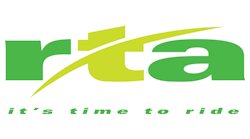- One word to describe yourself: Curious
- Alma Mater: Northwestern University (BS, MS, Ph.D.)
- Fun fact about yourself: At age six, while vacationing with my parents, I ran towards a sign that said "subway" in Hong Kong expecting a train, only to discover that it was a grade separated walkway under a road.
- Favorite station or stop that you have ever visited or frequent (and why): JR Central Namba Station - If you thought Times Square was big, Namba Station is a cavernous expanse of a shopping center with a train station attached.
- Favorite transit route: Routes that present a cross section of society - Chicago's 62 Archer or 22 Clark and New York City Transit's 7 train to Flushing.
Dr. Raymond Chan is a multifaceted public transit professional advancing state of art concepts by utilizing data and organizational decision-making techniques. As a doctoral student at Northwestern University, he worked with Professor Joseph L. Schofer on risk and resilience in public transit systems, studying the effects of Hurricane Irene and Sandy on New York City Transit. As part of his research, he developed metrics to better understand long-term effects of operational decisions on system performance. In addition, Chan developed innovative techniques to communicate complex models and data to executive leaders in transportation, culminating in custom built web dashboards that were instrumental in communicating half hourly systemwide headway adjustments for the Chicago Transit Authority (CTA) in 2012.
Chan’s post-academic career has placed him in transit agencies of various sizes. At Pace Suburban Bus in Chicago, he developed a contingency vehicle purchase plan for a capital constrained environment utilizing APC datasets. In addition, he helped foster the agency's initial foray into data science techniques by implementing Python and Tableau with data governance techniques. This significantly increased reporting speed and efficiency while cutting staff time necessary to coordinate reporting to external stakeholders. This allowed the agency to quickly communicate performance metrics with local community leaders on the importance of transit in the community.
At CTA, he led efforts to automate many business processes within the planning group to increase efficiencies in operational planning and ridership reporting. This led to increased efficiencies in developing data-oriented operational planning proposals, placing more precise service levels to meet customer needs. With advanced analytics support, he helped the agency demonstrate new and novel uses of the data derived from the account-based fare system, Ventra.
In addition, he managed CTA’s data warehouse, greatly increasing its size to include more than seven billion rows of actively query-able AVL, APC, AFC, workforce, maintenance and customer service data stretching over 15 years by integrating the latest data management techniques to move data throughout the agency efficiency with minimal budget.
Using this foundational data, he was instrumental in developing public facing crowding dashboards for the agency during the COVID-19 pandemic - developing a fully functioning, ADA compliant, automated custom dashboard in less than 90 days for the public. This enabled customers with essential travel needs to utilize agency data to better socially distance prior to widespread vaccine availability.
At Greater Dayton RTA, he is actively involved with metric development, data management and technology within the operations group to increase operational efficiency.
Throughout his decade of experience, he's taught more than 100 students at Northwestern University, as well as mentored many transit professionals in data governance and data analysis techniques. His students and mentees have gone on to other agencies across the United States to critically examine data to enable stronger decision making. He currently sits on three Transportation Research Board standing committees: Transit Management and Performance, Transit Data and Data for Decision Making, has authored numerous peer reviewed papers and has recently finished serving on a TCRP Synthesis Panel.
Is there a specific experience that led you to where you are today?
My first internship was with BNSF in the Service Design department in Fort Worth, Texas. There, I learned that I loved the complexities and oddities of passenger transportation, but still enjoyed the core operations research topics that are key to running an efficient network. The experiences working at a large national transportation company provided a good perspective on the shared challenges of transportation and how sometimes the best models and algorithms still require the human touch.
What do you enjoy most about your job?
Coming to work every day with a different challenge in an operational environment, but still knowing that we are part of a mission to move customers who choose not or cannot use an automobile. My colleagues and I know that innovation depends on collaboration and experimentation to find the solution to incrementally improve service delivery.
What’s the most challenging part of your job?
Communicating complex topics to various audiences. Modern communication involves utilizing strong visuals and key performance indicators along with traditional executive summaries—not just graphs and spreadsheets. On top of that, harnessing the ever-increasing datasets that come from automated system. Lastly, creating processes and methods to constantly update those metrics and visuals for our stakeholders. It's not simply enough to compute a metric - how do we manage this "meta-work" efficiently without creating additional roles.
Accomplishment you’re most proud of and why?
In Chicago, I helped lead a team that created one of the industry’s first passenger crowding dashboards for customers during COVID-19 in six weeks. We utilized existing tools in the technology industry to build a home-grown application that gave our customers information to help make more informed choices about transit travel. The app updated automatically without intervention using existing data sources, is mobile and visually impaired friendly.
Best advice/tip/best practice to share from your area of expertise?
The knowledge gap between what you can dream and what we can as an industry do is surmountable - with a good team, a bit of ingenuity and support from mentors and friends, seemingly "impossible" tasks are just steps away with a bit of trial and error. By taking small steps every day, we can move the industry in a positive direction.




